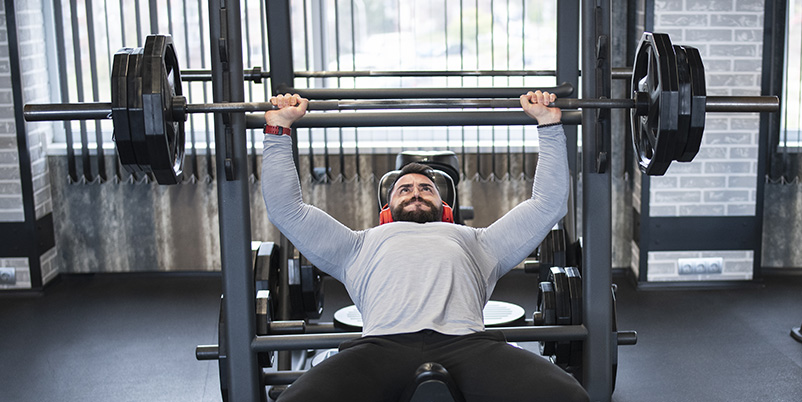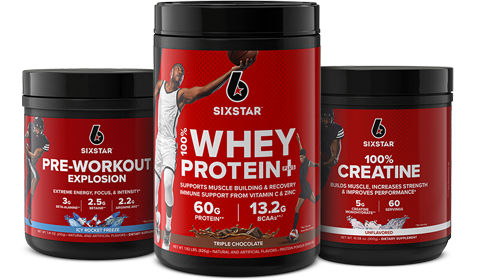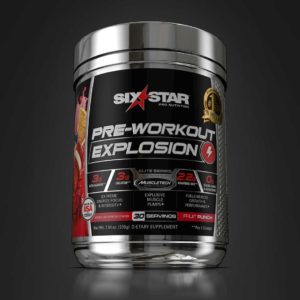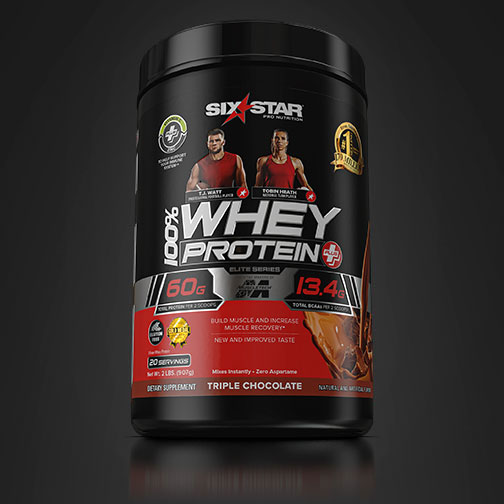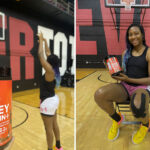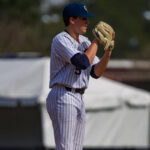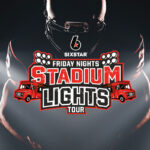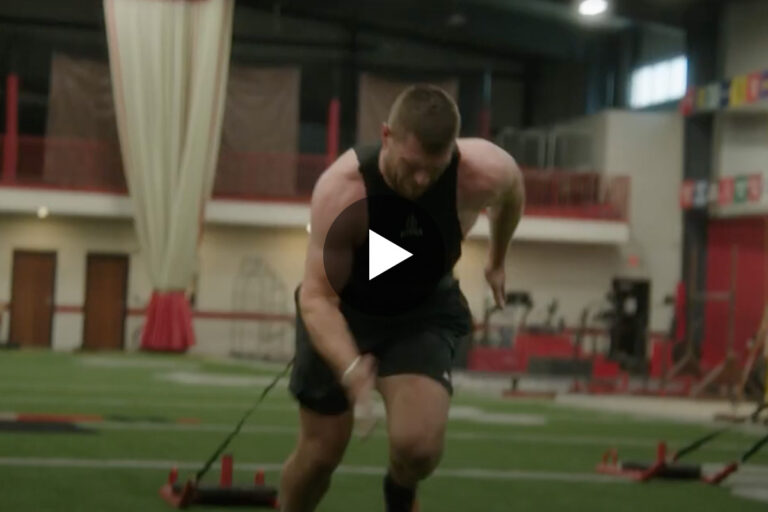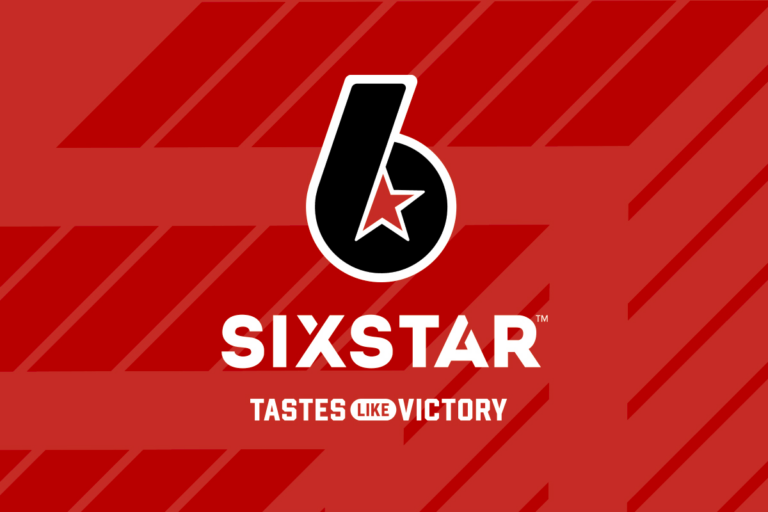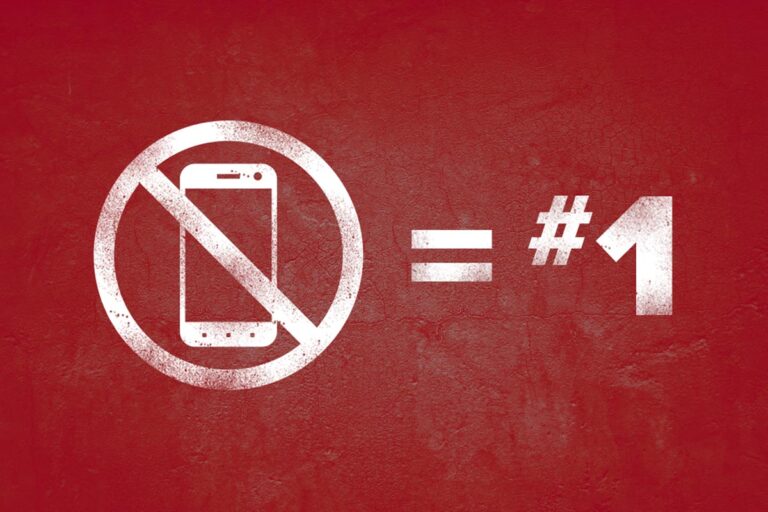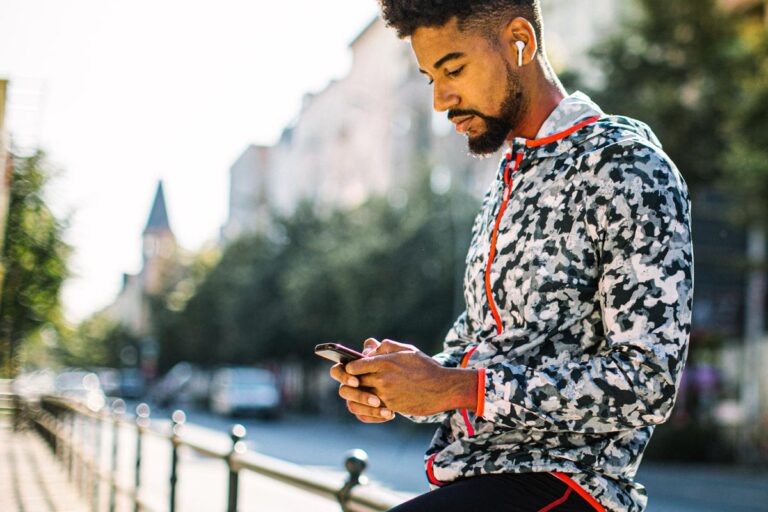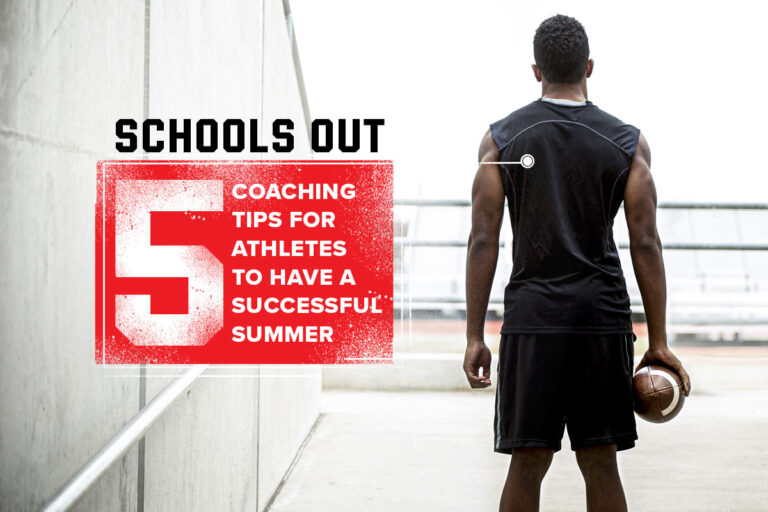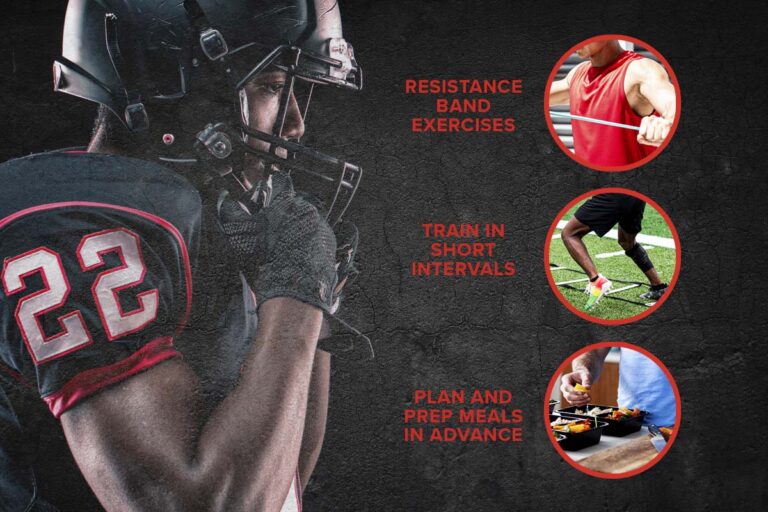The best hockey players in the world are fast and strong. Their strong legs create powerful skating strides, which allow them to outrace opponents to loose pucks, while their total body strength allows them to hold opponents off and stay on their feet, even as their opponents try to knock them down and take the puck away.
While you need to be strong, quick, and powerful to play most professional sports, single-leg strength and balance are requirements to play hockey at an elite level. Legendary hockey coach Herb Brooks used to say, “The legs feed the wolf.” The reason Coach Brooks said this was because hockey players need to have strong legs in order to compete at a high level; the same way that wolves need leg strength to chase after and hunt down their prey in order to survive.
For your off-ice workouts to translate on the ice, you’ll want to target your core muscles, lower body, and upper body when you train. This specific hockey weight training and drills program is created to enhance your speed, quickness, agility, power, and endurance. To support muscular endurance, you may want to try sports nutrition pre-workout supplements like Six Star’s Pre-Workout Explosion.
HOCKEY WEIGHT TRAINING PROGRAM
Prior to officially beginning any weight training program, it’s a good idea to consult your coach and physician so you can come up with a plan that’s best suited for you.
It’s generally recommended that you limit your strength training and weight lifting sessions to two to three times per week with at least one day of rest between sessions. Prior to each weight training session, make sure to properly warm up by doing dynamic stretches that will loosen your muscles and get your heart rate going. Then pick and choose the exercises below that will benefit you most based on your workout goals.
LOWER BODY
Box Jumps: This plyometric exercise for hockey players trains your nervous system for first step explosiveness. When it comes to box jumps, it’s not the height of the box that’s important; it’s the height of the jump that’s the focus for this drill. Using an 18-inch box, jump as high as you can over the box, and then land under control on top of the box. Do four sets of ten reps to complete this exercise.
Bulgarian Split Squats: Due to the biomechanics of skating, hockey players often develop tightness in their hips, groin, calves, ankles, and hamstrings. Bulgarian split squats, or rear-foot-elevated split squats, help alleviate all of these issues, while also improving strength, balance, hip mobility, and general athleticism. Since hockey is played on one leg at a time (players don’t push off with both legs at the same time), Bulgarian split squats are a beneficial exercise for hockey players due to the fact that this exercise is done one leg at a time, with the opposite leg elevated on a chair or bench behind you. To do a Bulgarian split squat, stand two to three feet in front of a knee-high platform. Extend your right leg behind you and rest your toes on the bench. Your toes can be flat or tucked, depending upon what you prefer. Square your hips and shoulders, and then while keeping your torso upright, slowly lower your right knee toward the floor. Your front knee will form approximately a 90-degree angle. Maintain evenly distributed weight in your whole foot and don’t shift forward on your toes, or exaggerate pushing through your heel. Then reverse the move and return to the starting position. Do this exercise for your desired number of repetitions and sets.
Single-Leg Dumbbell Romanian Deadlifts: Single-leg exercises are great for hockey players since they build strength and muscle, improve stability, and give your spine a break from heavy loading. To do single-leg dumbbell Romanian deadlifts, keep one leg slightly bent, while holding a dumbbell in the opposite hand. Keep your back and neck neutral, and lower the dumbbell while simultaneously moving the same side leg backward. Keep your core tight to maintain balance, and as your leg comes down raise the dumbbell back to your standing position. Then repeat on the other side after you’ve completed your desired number of repetitions. This exercise will really work your hamstrings and glutes. For added difficulty, try to keep the leg that you’re bringing backward raised at all times – not allowing that foot to touch the floor between reps. If that’s too challenging, you can also keep both legs on the floor while still targeting the same muscles. For best results, focus on slow and controlled movements during this exercise, rather than going for speed. You can do three to four sets of six to 10 repetitions for this exercise.
Barbell Box Squats: This strength training exercise targets your calves, glutes, hamstrings, and quads, and increases strength, size, and power throughout your legs. To do a barbell box squat, stand with your feet shoulder-width apart in front of a box (around chair-level) with a loaded barbell resting on the back of your shoulders. To get into a half-squat position, push your hips back, and bend at your knees. Then descend into a full squat position, but don’t sit on top of the box. Pause when your thighs are parallel and just a few inches from the top. Brace your core, pause, and then drive your hips upward back to the starting position. Repeat for your desired number of repetitions and sets.
UPPER BODY
Incline Bench Press: The incline bench press is a compound upper body exercise, which means that multiple joints and muscles contribute to the movement. While the incline bench press targets many of the same large upper body muscles as the flat version, the angle of the press shifts the work to your upper chest and shoulders. To perform an incline bench press, go to the incline bench press station at your gym, or raise an adjustable bench to about a 45-degree angle and place it in a power/squat rack. Lie on the incline bench and place your feet on the floor with your butt about six inches above the seat. Then slide yourself down so your butt is on the seat without lifting your feet off the ground. Tighten your glutes and core, and then grab the barbell with a grip slightly wider than shoulder-width. Hold onto the barbell as tightly as you can. Then unrack the bar and bring it directly over your shoulders with your arms straight. This is the starting position. Take a deep breath in and lower the bar with control to the upper part of your chest. Your elbows should be at about a 45-degree angle with your body. Drive your feet into the ground and explosively press the bar up to return to the starting position. Continue for your desired number of repetitions and sets.
Seated Barbell Supinated Wrist Curl: Grip strength exercises like the seated barbell supinated wrist curl will help you improve your hockey shot by strengthening your forearms. While sitting on a bench, grab a barbell, bring it up around your knees, and take a pretty close supinated (palms up) grip. With your forearms resting comfortably on your thighs, allow the bar to go all the way down, and then curl it all the way back up – making sure to contract your forearms at the top. Complete three sets of 10 to 12 repetitions, and do this exercise once or twice a week toward the end of your training session.
CORE
Pallof Press: Core strength is what allows players to win puck battles, put their entire weight into a shot, and continue their stride while protecting the puck. The Pallof Press is an anti-rotation hold exercise that will help you develop a stable core. Toward the end of your workout, attach a D-handle to a cable pulley, hold it at your sternum, and stand with your left shoulder pointed toward the machine – far enough away for you to feel tension on the cable. Keeping your shoulders and hips square, press the cable straight out in front of your body, resisting the tendency to rotate toward the machine. Hold the position for two seconds, and then slowly return your hands to your sternum. Do 10 to 12 repetitions, and then repeat the press facing the opposite direction. You can also use a medium-weight resistance band wrapped around a pole for this exercise, too.
Dead Bugs: This core exercise will help you train the muscles that allow you to make big hits, and will prevent you from getting knocked off the puck. The dead bug exercise involves lying face up on your mat with your arms in the air above your torso and your legs in the air with your knees bent at 90-degree angles. Then, lower your opposite arm and leg toward the floor in a slow and controlled fashion. Return to center, and then repeat on the other side. When completing dead bugs, focus on keeping your rib cage down, without it flaring up, while keeping your low back flat against the ground. You can also use exercise balls, bands, or weights as you do this exercise that will improve your posture and help prevent low back pain.
OFF-ICE HOCKEY DRILLS
Figure 8’s: Since it’s not always easy to get ice time, you have to get creative with your off-ice drills. All you need for this Figure 8’s stick handling drill is your stick and three pucks. Set up two pucks about three feet apart and have one puck for you to stickhandle with. Then try to move the puck you’re using in two (or three maximum) motions around the two pucks spread out three feet apart, while shifting your bodyweight back and forth. This is also a good drill to do inside the arena to warm up your hands before games. You may even want to try using a golf ball to make it more challenging since golf balls bounce off the blade much quicker. Practice this drill on both your strong and weaker sides.
The Mirror: You’ll need a partner for this drill that will enhance your agility and improve your reaction time. To do The Mirror drill, have Player 1 and Player 2 stand about three to four feet apart, while standing face-to-face. Player 1 will move around quickly in a small area, while Player 2 will react to all of Player 1’s movements, trying to mimic Player 1. It’s Player 2’s job to stay with Player 1 step for step. After Player 2 is unable to keep up with Player 1, take a quick break and then have Player 2 move around and Player 1 try to mirror all of Player 2’s movements. At the end of your session, make sure to cool down and stretch before heading home. Sports nutrition supplements like Six Star 100% Whey Protein Plus can support your recovery by helping you build muscle and increase your strength.
